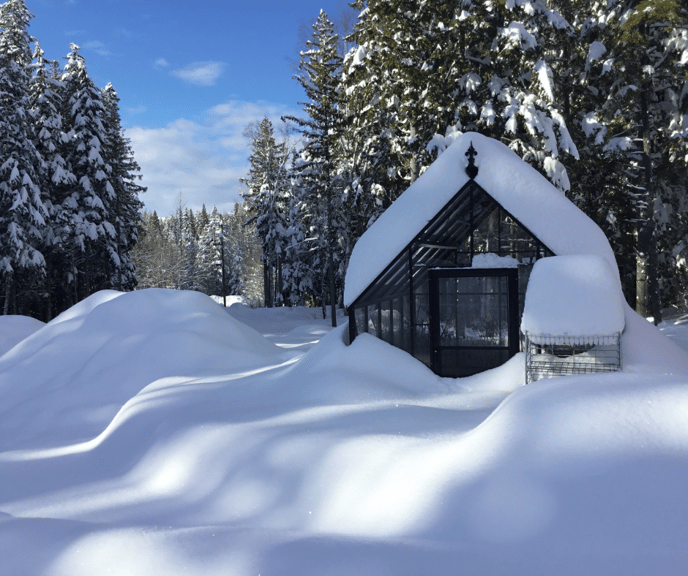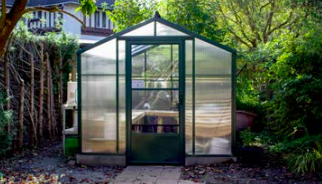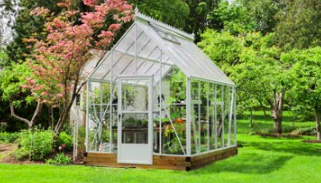Can I use the greenhouse in every season?
Our greenhouse experts can help you to find the right combination of glazing and framing to create the growing environment you need in your greenhouse.
Our greenhouses are designed to withstand North American climates with strong frames, weather-resistant gaskets and more.
 Greenhouse gardening becomes such a passion for our customers. s. It starts with tasty summer tomatoes, then goes into trying to grow winter greens, to trying out a full cold weather crop! At that point, you have great options. You can choose supplemental lighting, adding heat or an evaporative cooler to control your greenhouse temperatures. We encourage you to think of it as science experiment filled with trials and successes and a lifetime of enjoyment.
Greenhouse gardening becomes such a passion for our customers. s. It starts with tasty summer tomatoes, then goes into trying to grow winter greens, to trying out a full cold weather crop! At that point, you have great options. You can choose supplemental lighting, adding heat or an evaporative cooler to control your greenhouse temperatures. We encourage you to think of it as science experiment filled with trials and successes and a lifetime of enjoyment.
Cool, Warm, or Hot House?
Generally, there are three types of greenhouse gardeners that create different growing environments depending on their needs.
A Cool House
 If you live in a mild climate and want to winter over your plants, a cool house is probably your perfect fit. A greenhouse with single glass sidewalls and a twinwall polycarbonate roof allows for optimal growth in the spring and summer. This greenhouse would maintain a night temperature of 40 - 45 Fahrenheit (5 – 7 Celsius).
If you live in a mild climate and want to winter over your plants, a cool house is probably your perfect fit. A greenhouse with single glass sidewalls and a twinwall polycarbonate roof allows for optimal growth in the spring and summer. This greenhouse would maintain a night temperature of 40 - 45 Fahrenheit (5 – 7 Celsius).
A Warm House:

If you live in a cold climate but want to grow citrus trees, orchids, or foxgloves; a warm house might work well for you. One of our Cape Cod greenhouses with fivewall polycarbonate may be a
great fit and will need very little additional heat. The night temperature would hover around 55 Fahrenheit (13 Celsius). The fivewall polycarbonate glazing allows for the best combination of light transmission and heat retention. The steep pitch roof of the Cape Cod would also shed snow easily.
A Hot House:
 Hot houses are designed with growing tropical plants in mind and would require a night temperature of 60 Fahrenheit (15.5 Celsius) and higher. In this case, we would recommend double glass to help with energy efficiency and adding supplemental heat sources to keep the temperature within a steady range. If you already live in a warmer climate, some of these options may not be needed.
Hot houses are designed with growing tropical plants in mind and would require a night temperature of 60 Fahrenheit (15.5 Celsius) and higher. In this case, we would recommend double glass to help with energy efficiency and adding supplemental heat sources to keep the temperature within a steady range. If you already live in a warmer climate, some of these options may not be needed.
